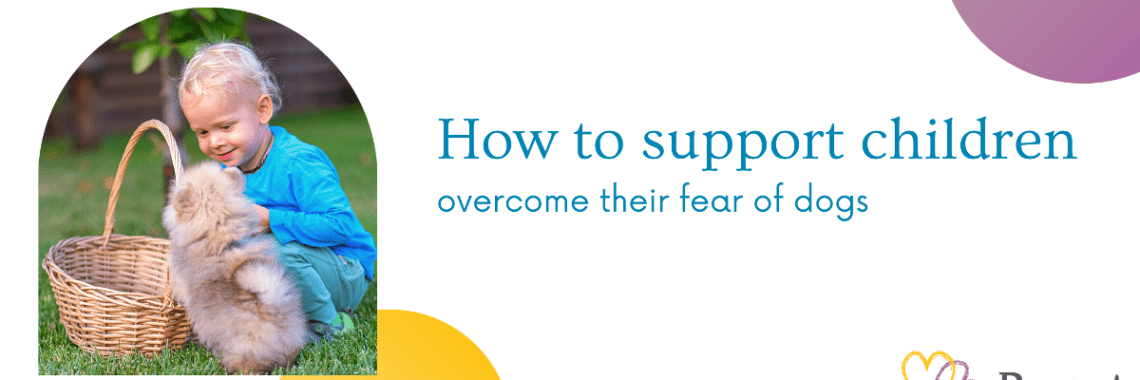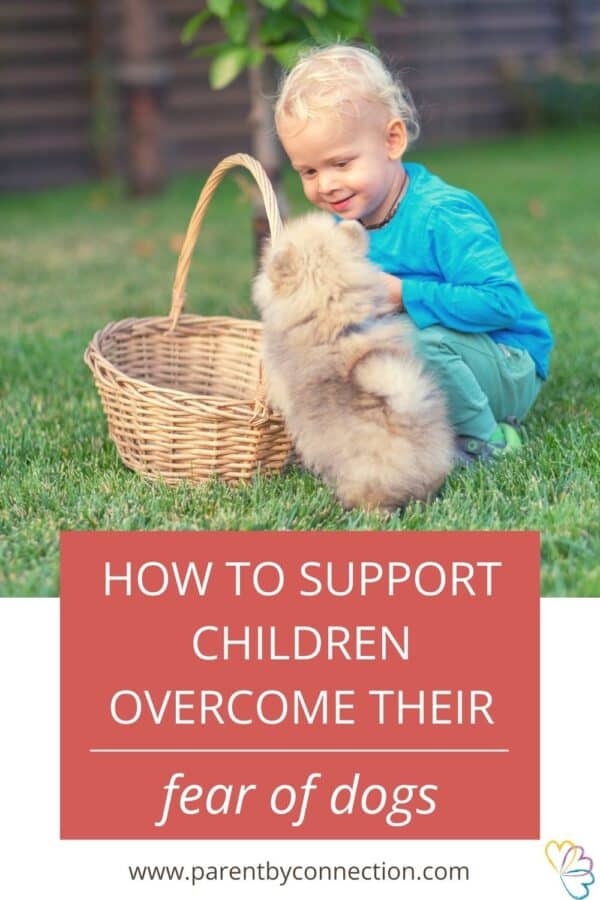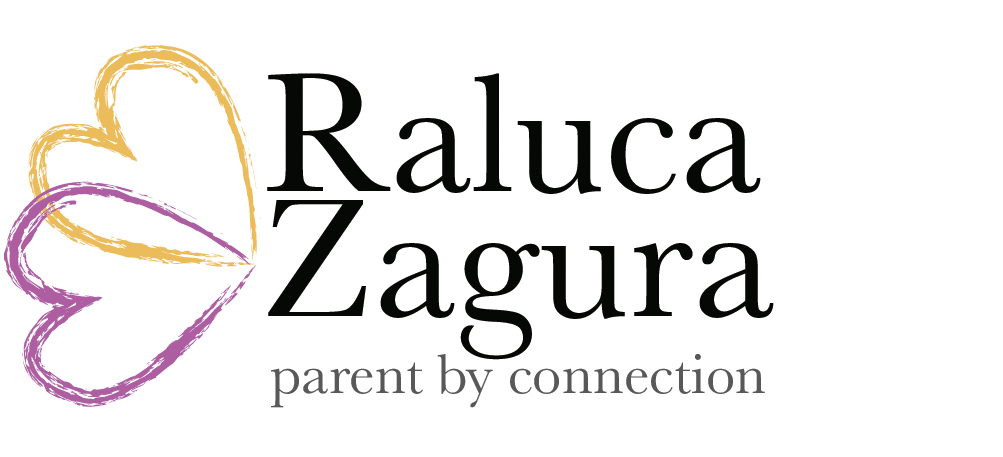
How to support children overcome their fear of dogs
Fear of dogs can keep our children safe. And it can also prevent them from enjoying life, visiting family members, or playing in the park. Luckily, there are things we can do to support children overcome their fear.
In the previous article on the topic we talked about how we can use play to help our children conquer their fear through giggles and laughter.
In this article we will talk about how we can use listening to support our children release the fear through crying, sweating, or trembling.
What is 'the edge of the fear'?
I want to start by introducing a term used by psychologist Lawrence Cohen in his book, ‘Playful Parenting’. And that is the ‘edge of the fear’: “This edge is where the healing work of overcoming fears takes place”.
Children can find and use this ‘edge’ with a warm and patient adult that they trust, and feel safe and connected with.

Finding 'the edge of the fear' to support children overcome their fear of dogs
Let’s take an example.
Supposing you have a child who refuses to go to the park because they know that dogs might be there. They no longer get anywhere close to a park. Getting out the door is a no. They even refuse to get dressed to go to the park! An hour in the park is out of the question.
What you might try one day, when you feel well resourced and patient, is to go to your kid and warmly suggest ‘Sweetie? How about going to the park for 5 minutes today? Just you and me, what do you say?’.
If the child starts protesting, ‘No, not going, stupid idea!’, you stay with them. Listen to what they have to say. Show them that you get them, you hear them, ‘I know you don’t want to go. We will go for just 5 minutes, just the two of us. Come on, let’s get dressed.’
If they agree, suggest them to take the next step (putting their shoes on or getting a backpack). In case they refuse to get dressed, you can get some clothes out of their wardrobe and ask ‘Are you ready to get dressed for the park?’.
At some point during the stages needed to get to the park, if you are able to stay calm and warm, chances are your child will have a bodily reaction. They might start to tremble, or shake with fear, or cry, maybe even laugh. That is the ‘edge of the fear’.
This is a healing process
Being at home, safely tucked in their bed, it’s too far away from dogs, but getting jumped on by a barking dog is too close. Somewhere in between in just right. And you are going to stay right there.
You will be with them, listening to all that they have to show you. Let them share with you all about how scary even the thought of being in a place where dogs might be is for them.
In those moments, you don’t have to say anything. You don’t need to talk them out of it, or try to tell them all the reasons why they shouldn’t be afraid of dogs. They just need to release the fear while feeling the safety you are offering. And they need to feel the safety, not be talked into it.
This is their healing process, they need to go through it to overcome their fear of dogs.
When the wave of emotion seems to subside, you can remind them again or ask them ‘are you ready to get dressed to go to the park?’. They might start crying again, begging you not to make them go, not to take them to the park, anywhere but the park.
And you listen some more.
Take a pause if any of you needs a break
During this process, try to be aware of how you are feeling on the inside.
If you can keep listening and supporting them as they work through this, you can repeat this process until they are able to get dressed. Or you might decide that you won’t go to the park today, it’s enough work for now, you will try again in two days time or next week.
Remember that this emotional work is hard work for children to be doing. It is exhausting for them. Therefore it is better not to set your mind to reaching the park today. Just focus on supporting them to do some of the work that they need to do to be free of this fear.
Deciding not to go the park today isn’t ‘giving in to their protests’. It is respecting your ability to support them and their capacity to work on emotional recovery.
Rest assured, you are not doing anything wrong and you are not ‘spoiling’ anything if you decide that it’s ok, you won’t go to the park today, and you will try again in a few days.
Feeling the safety and the fear
But if, after some good cry or tremble, they agree to go to the park, you leave the house and head for the park. There, hopefully, you will see a dog somewhere in the distance.
That’s an opportunity to ask your child ‘shall we get closer?’. They might be comfortable taking a few steps towards the dog, and then they might stop.
Wherever they stop, that’s their ‘safe spot’. That is where they still feel safe but the feelings of fear are starting to come up. And that’s when you suggest ‘shall we take one more step towards the doggy?’.
If they take it, suggest taking another step.
You are right there with them, warm, loving, and caring. You trust this process and their ability to work through and survive it. There is no intention to scold or pressure them. And they will feel all of that. They will use all the connection and safety you provide, to tackle this fear.
Following your child's lead
In situations like these, we need to make it clear that we won’t force our children to do anything.
We won’t make them get closer or take a step forward, we are just suggesting small steps. No pressure on them to ‘get over it’. Our children just need us to follow their lead and respect their rhythm, because otherwise we risk causing more harm.
This process takes time and this is why it’s vital to try these things when you are well rested and you feel well resourced.
When you suggest taking another step, your child might start crying or shaking or trembling. Again, that is the ‘edge of the fear’: they are not too far away for the feelings to not come up, and they are not to close to the dog for the fear to overwhelm your child.
And, just like you did in the example with going to the park, you stay and listen. When the crying subsides, you can suggest again, ‘shall we take another step?’ or ‘are you ready to take a tiny step towards the dog?’.
Through all this process, you follow your child’s lead. Remember that you both can stop at any time.
Making sure the dog isn't getting closer
In this example, you need to make sure the dog in question is not going to get closer. This can be tricky in a park, but might be possible in certain circumstances.
An easier option is to think of a friend who has a small friendly dog. One that is willing to support you support your child overcome their fear of dogs.
You have to prepare this friend for how this emotional project can go and how the healing process might look.
If they are willing to still go ahead, you will have them hold the dog, making sure the dog cannot get any closer to your kid. You will stay with your child at a distance and suggest taking a step closer, looking for that ‘edge of the fear’. When you find it, you then listen to the healing process.
What you will notice in time
After one or more sessions like this, your child will be able to get closer to the dog, close enough to maybe even touch the dog. They might even ask you ‘Mum/Dad, can I touch the dog?’.
Ask the owner where it’s the safest place to stroke the dog so your child can start stoking the dog from that spot. Slowly, gradually, they can take steps towards stroking the dog on the head. Show your child how to hold their hand so the dog can smell or lick their hand. Explain to your child what the dog is doing and why.
Once again, during this process, be attuned to your child. And be ready for them to have a bodily emotional reaction (crying or shaking or trembling) again. Let them work some more on releasing the scary feelings if they need to. Don’t tell them ‘but you’ve befriended the dog, what’s all this now?’ or ‘come on, you saw there’s nothing to be afraid/scared of!’.
Conquering a fear can take time.
You also need and deserve support
You need and deserve support too, as this whole process can be triggering, challenging, and overwhelming. Try to make sure you have a listening ear and someone supportive around you as you support your child to conquer their fear of dogs.
If you yourselves are afraid of dogs, it will be difficult to support your child conquer their fear. Prior to supporting your child overcome their fear of dogs, you need to conquer your own fear first. And we will talk about this in a future article, or you can get in touch with me in the meantime.
I hope this has been helpful, please do let me know if you’ve tried these suggestions and how things are going. Or if you have any questions, I would love to hear them, so feel free to leave a comment below or contact me.
Please note: ideas from this article might be useful to support children overcome their fear of dogs even in the case of a traumatic incident with a dog, but they are not enough for a full recovery.
If you decide to get support, we can talk more about your particular situation, and I can support you through it all, so please feel free to get in touch with me.

The author of this page is Raluca Zagura, a Certified Hand in Hand Parenting Coach. You can read more about her here.


One Comment
Pingback: